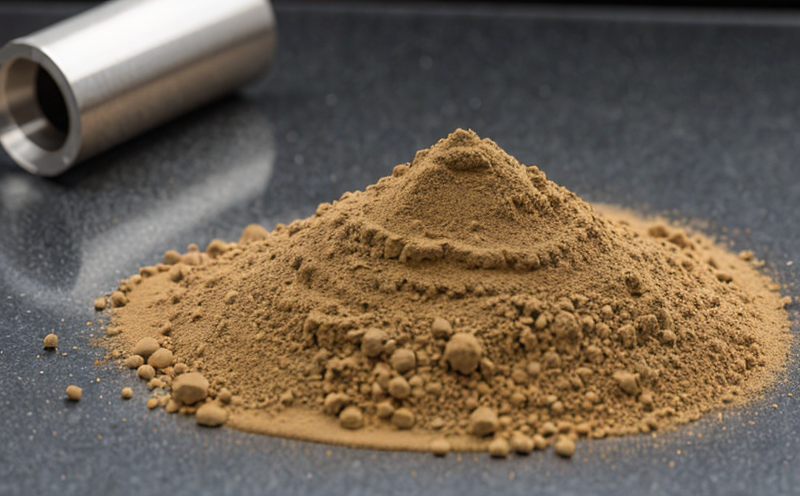ASTM D5630 Ash Content of Raw Materials Testing
The ASTM D5630 standard is a critical tool used in Additive Manufacturing & 3D Printing testing, especially when dealing with raw materials. This method provides a means to determine the ash content of polymer materials intended for use as raw materials in additive manufacturing processes.
Ash content is an important characteristic that impacts the performance and quality of parts produced through 3D printing. The presence of impurities or contaminants can lead to degradation of mechanical properties, reduced surface finish, and increased wear rates. Understanding ash content helps manufacturers ensure they are using high-quality raw materials, which in turn leads to higher product reliability.
The testing process involves the precise combustion of a known mass sample at 500°C under controlled conditions. The resulting weight loss is interpreted as the ash content. This method is particularly useful for identifying trace elements that may be present in the form of impurities or additives within the raw materials.
For accurate results, proper specimen preparation is essential. This includes ensuring uniformity and representative sampling to avoid biasing the test outcome. The sample should be homogenized prior to testing to ensure consistent ash content measurements across different batches.
The instrumentation used for ASTM D5630 testing typically consists of a muffle furnace, balance, and crucible. These tools are crucial in maintaining precise temperature control and accurate mass measurement during the combustion process.
Acceptance criteria for this test vary based on the specific application or industry standards. Typically, lower ash content indicates higher purity raw materials, which is ideal for additive manufacturing applications where precision is paramount. Compliance with ISO, ASTM, EN, IEC, etc., is crucial to ensure compatibility across different international markets and regulations.
Real-world usage of this test in the sector includes quality control checks during production runs, supplier audits, and R&D initiatives aimed at optimizing raw material formulations for specific additive manufacturing processes. By ensuring consistent ash content levels, manufacturers can enhance product performance and durability.
- Quality Control: Regular testing helps maintain consistency in product quality.
- R&D Initiatives: Testing new materials aids in identifying suitable candidates for use in 3D printing applications.
- Supplier Audits: Ensures that suppliers meet stringent material purity standards.
The importance of accurate ash content testing cannot be overstated, as it directly influences the reliability and performance of parts produced through additive manufacturing processes. By adhering to ASTM D5630 guidelines, manufacturers can ensure they are utilizing high-quality raw materials, ultimately leading to superior end products.
Eurolab Advantages
At Eurolab, we offer comprehensive testing services that cater specifically to the needs of quality managers, compliance officers, R&D engineers, and procurement teams. Our expertise in ASTM D5630 ash content testing sets us apart in several ways:
- Accurate and Reliable Results: We employ state-of-the-art equipment and highly trained technicians to ensure precise and accurate results.
- Comprehensive Reporting: Our reports are detailed, providing not only the ash content but also insights into potential impurities and additives present in the raw materials.
- Industry Experience: With years of experience in additive manufacturing testing, our team is well-versed in best practices and industry trends.
- Custom Solutions: We offer tailored testing solutions to meet specific client needs, ensuring that every project receives individual attention.
Our commitment to excellence ensures that clients can trust Eurolab for all their ASTM D5630 ash content testing requirements. Whether you are a large corporation or a small startup, our services are designed to support your quality and compliance goals.
Quality and Reliability Assurance
The results of ASTM D5630 testing play a crucial role in the quality assurance process for additive manufacturing. By ensuring that raw materials meet specified ash content levels, manufacturers can enhance product reliability and performance. This testing is particularly important given the precision required in 3D printing processes.
- Reduction of Contamination Risks: Lowering ash content minimizes the risk of contamination, which could otherwise lead to defects or failures during manufacturing.
- Promotion of Consistency: Regular testing helps maintain consistent quality across different batches and production runs.
- Enhanced Product Durability: By using raw materials with lower ash content, manufacturers can produce parts that are more durable and have longer lifespans.
In addition to these benefits, ASTM D5630 testing also supports regulatory compliance. Many industries, including aerospace, automotive, and medical devices, require stringent quality standards for their products. By ensuring compliance with international standards such as ISO, ASTM, EN, IEC, etc., manufacturers can meet these requirements and gain a competitive edge.
The importance of reliability in additive manufacturing cannot be overstated, especially given the critical nature of many applications. By leveraging accurate ash content testing, manufacturers can build trust with their customers, ensuring that every part produced meets the highest quality standards.
Competitive Advantage and Market Impact
The use of ASTM D5630 ash content testing offers significant competitive advantages in the additive manufacturing sector. By ensuring high-quality raw materials, manufacturers can produce parts with superior performance characteristics, durability, and reliability. This translates into enhanced customer satisfaction and loyalty.
- Enhanced Customer Trust: Consistent quality and reliability build trust with customers, fostering long-term relationships.
- Innovation Opportunities: By leveraging accurate ash content testing, manufacturers can explore new materials and processes that meet stringent quality standards.
- Cost Savings: Lowering ash content in raw materials can lead to cost savings by reducing waste and improving production efficiency.
The market impact of accurate ASTM D5630 testing is significant. Compliance with international standards such as ISO, ASTM, EN, IEC, etc., opens doors to new markets and opportunities for growth. By ensuring that products meet these stringent requirements, manufacturers can tap into global markets and expand their customer base.
In conclusion, the use of ASTM D5630 ash content testing is not just a technical requirement but a strategic decision that can significantly impact a company's competitive position in the market. By prioritizing quality and reliability, manufacturers can differentiate themselves from competitors and position themselves as leaders in their respective industries.





